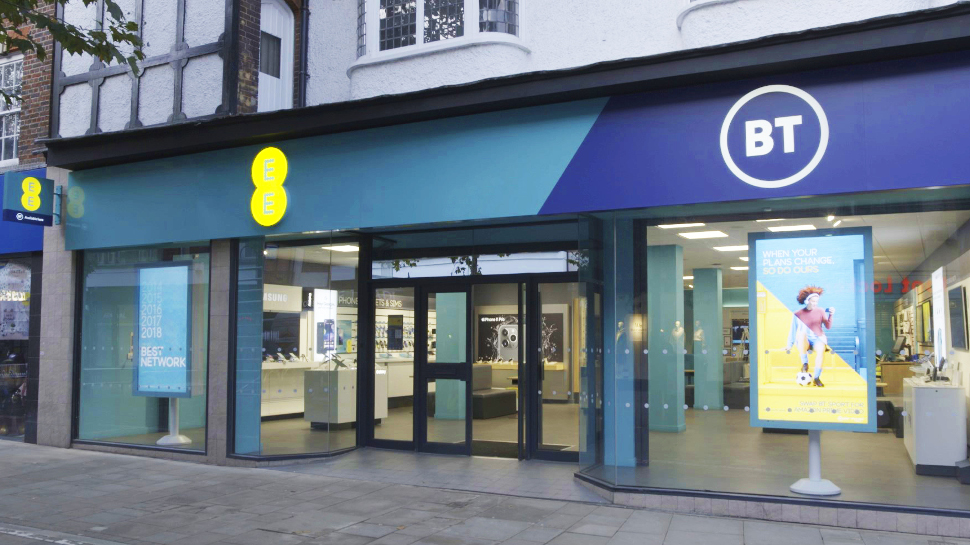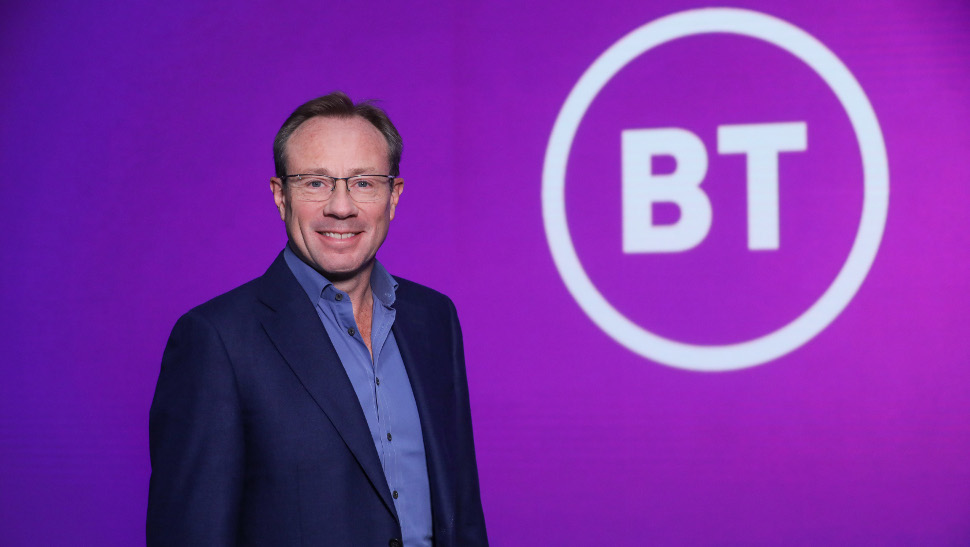BT returns to the high street as customer service returns to the UK
Co-branded stores with EE as call centre repatriation is brought forward

BT is overhauling its customer service operations by introducing multi-brand high street stores and repatriating all support operations to the UK a year earlier than planned.
The company has pushed convergence ever since its £12.5 billion takeover of EE in 2016, introducing a range of combined fixed-mobile products last year. It has overhauled this offering with the launch of ‘BT Halo’ while it has also pursued other synergies.
EE’s retail stores will now be co-branded with BT, meaning home broadband and business customers will be able to access face-to-face support more easily.
“This is the first time in nearly 20 years that BT customers have been able to go somewhere for support,” claimed BT Consumer CEO Marc Allera.
- BT and EE pitch convergence
- 5G subscriptions to reach 1.5bn by 2024
- 5G phone deals - the best prices and contracts
BT customer service
BT had already committed to returning all customer service operations to the UK and Ireland by the end of 2020 and has created 2,000 jobs over the past few years.
It said that calls to UK-based agents had the highest satisfaction rate and has revealed an accelerated timetable for that process, alongside the introduction of ‘home tech’ experts that provide support at customer’s homes and offices.
The company is embarking on a major restructure that involves the decentralisation of various functions in order to facilitate a more regional approach to sales and support. As part of this drive, a new regional call routing system will see customers speak to the most local agent available.
Are you a pro? Subscribe to our newsletter
Sign up to the TechRadar Pro newsletter to get all the top news, opinion, features and guidance your business needs to succeed!
“We know we need to provide the best customer service possible to get where we want to be,” added Allera, noting that this would be a key differentiator in an aggressive communications market.
“We’ve gone from having the highest number of complaints to having below industry average. Our mission is to provide the most personal and local service because customers told us this.”
Connectivity goals
BT didn’t provide any new information on its full fibre strategy, but did confirm it would stop selling copper broadband in areas where it has superfast coverage. As many as 700,000 customers will receive an automatic upgrade to either fibre to the cabinet (FTTC) or fibre to the premise (FTTP).
There are also plans to futureproof businesses with BT set to offer 1Gbps Ethernet as standard, while the ‘BT Halo’ converged service for businesses will include a digital phone line rather than an analogue connection.
Finally, the company also detailed a new digital skills initiative designed to help millions of young people.

“BT is moving and changing with an unpresented range of products, partnerships and services that will benefit the UK,” declared BT CEO Philip Jansen, outlining the firm’s new ‘Beyond Limits’ mantra. “Since I joined BT [earlier this year] I’ve seen some of the amazing things this company does every day. Thirty million customers and businesses depend on us.
We are starting from a really good place. The scale and scope of what we do is more than just statistics. We’re in a unique position that impacts literally millions of people every day in the UK.”
“Convergence represents a key pillar of BT’s strategy and one of the few areas for future growth in a cut throat market,” commented Paolo Pescatore, an analyst with PP Foresight.
“While BT is well placed given its network assets, this move should have been made some time ago. There are no more excuses, it must execute. The brand and new vision is a step in the right direction. However, it does not seem bold enough for a company that is seeking to transform itself.
- Here are the best EE deals for October 2019
Steve McCaskill is TechRadar Pro's resident mobile industry expert, covering all aspects of the UK and global news, from operators to service providers and everything in between. He is a former editor of Silicon UK and journalist with over a decade's experience in the technology industry, writing about technology, in particular, telecoms, mobile and sports tech, sports, video games and media.